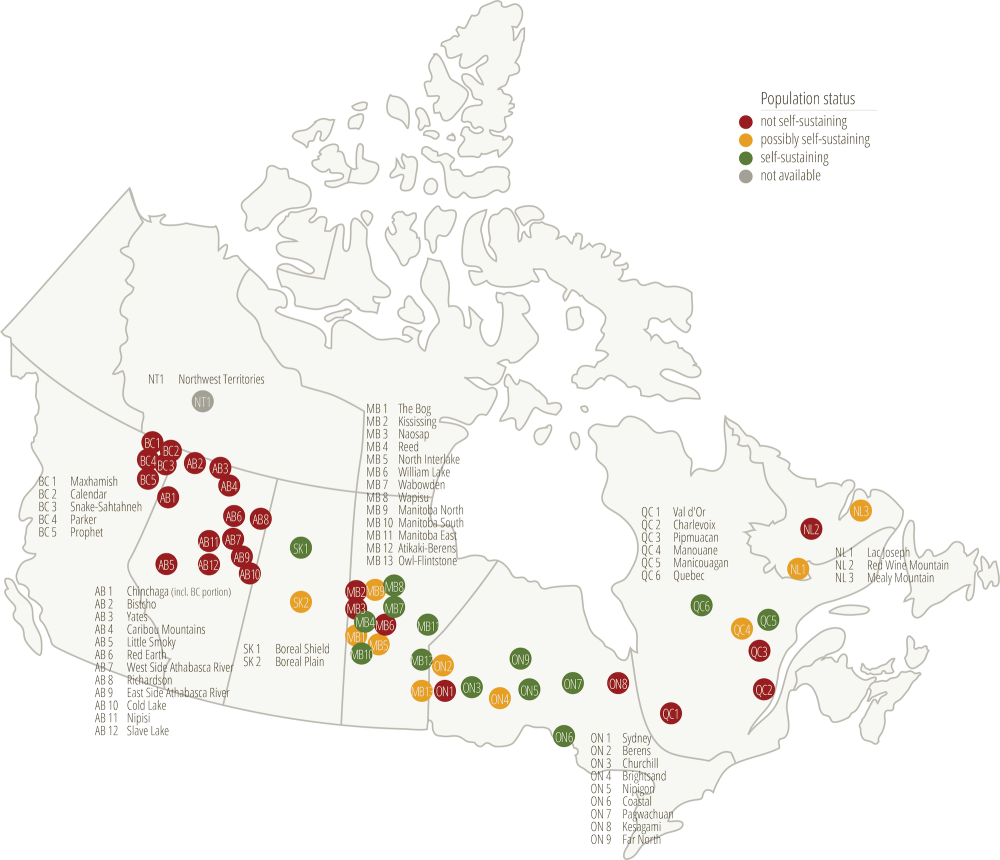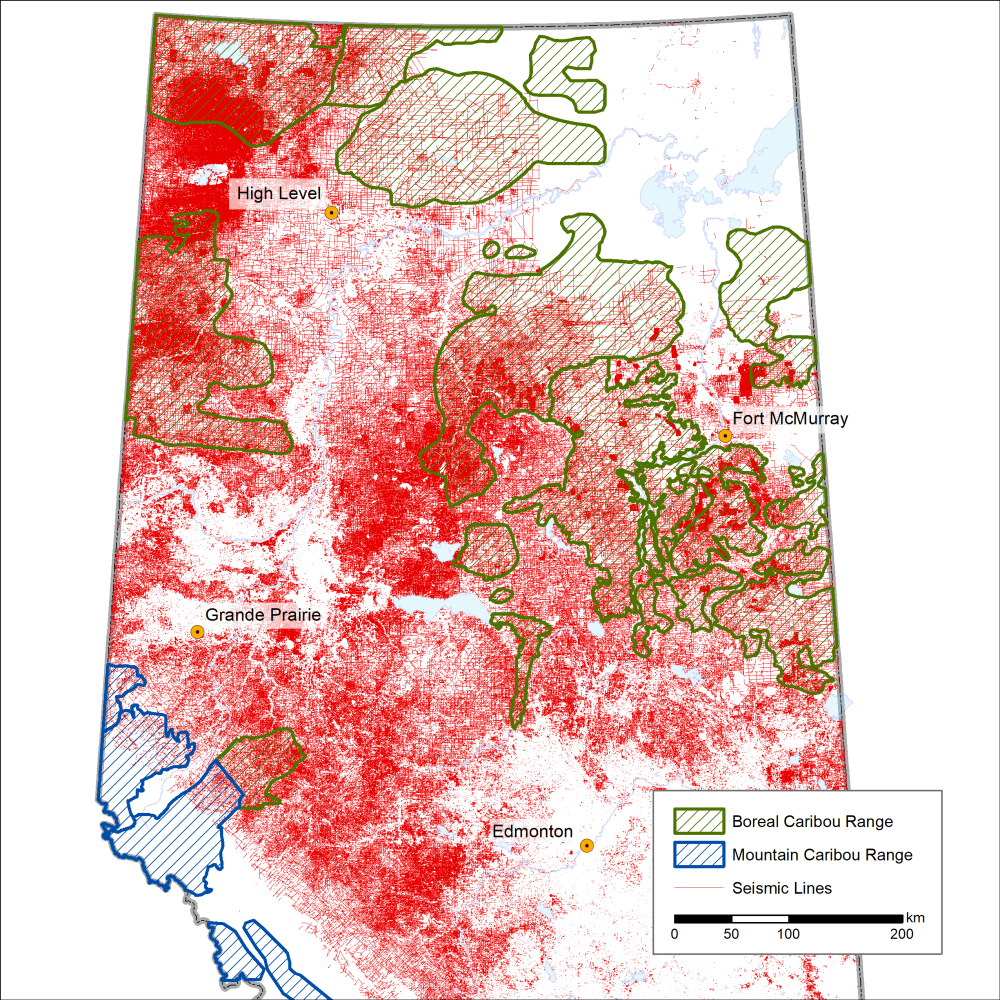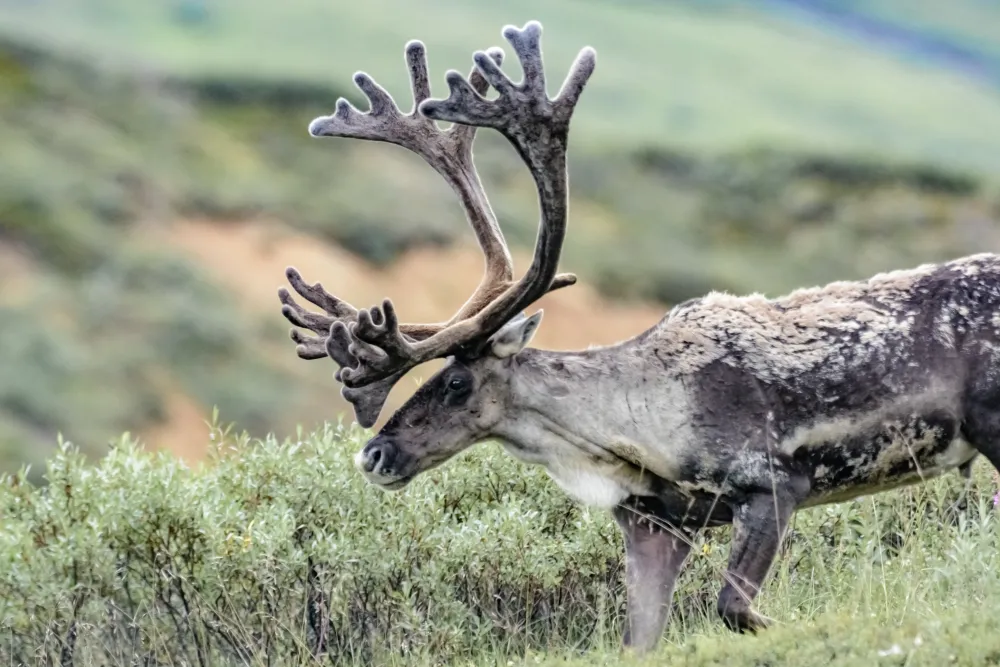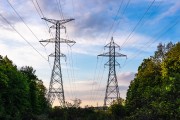More than 70% of boreal woodland caribou herds in Canada are in decline, and recent analysis suggests that forestry and oil and gas activities in critical habitat have accelerated the trend.

Status of caribou herds across Canada. Only 14 out of 51 herds are designated as “self-sustaining,” meaning they are large enough to persist for over 50 years and projected to have a stable or increasing population trend over the next 20 years.
Our new report, Status of Boreal Woodland Caribou Conservation in Canada, finds that to help the species recover conservation efforts to protect the last remaining tracts of critical habitat must be prioritized.
The habitats that caribou inhabit – boreal forests and peatlands – are among the most carbon-rich in the world. When caribou habitat is lost to activities such as oil and gas development and logging, significant amounts of greenhouse gases (GHGs) are released. On the other hand, when caribou habitat is conserved carbon remains in the ground.
Lines cut through the boreal forest to explore for oil (seismic lines) are one of the biggest threats to caribou survival, as they create “highways” for predators to directly access the areas where caribou dwell. To truly make a difference for caribou, both action by the energy industry to restore these seismic lines and the creation of new protected areas are crucial.

Extent of seismic lines in Northern Alberta.
Source: Canadian Parks and Wilderness Society Northern Alberta Chapter.
Whether at the provincial or federal levels, there is opportunity to manage forests and peatlands better. Conservation, restoration, and management of caribou habitat will create huge climate benefits through carbon storage. But to make these things happen Canada needs stronger policy and legislation.
Based on our report, here are four recommendations to help caribou herds recover and mitigate climate change:
1. Prioritize conservation over restoration.
Ongoing loss of habitat is the number one concern for caribou in the long term. Habitat restoration occurs over a long timeframe and is not yet a proven technique to effectively replicate undisturbed habitat; therefore, protection of remaining critical habitat must be a top priority to ensure survival of the species in the next 100 years.
2. Strengthen legislation, policy, and Indigenous co-governance mechanisms to protect caribou habitat.
Provinces are currently allowed to create exemptions to the Species at Risk Act, which forbids destruction of critical habitat for species like caribou that are listed as Threatened or Endangered. These exemptions should no longer be permitted.
Legislative or policy mechanisms should also be put in place and used to uphold Indigenous Treaty and inherent rights with respect to protection of caribou habitat. Legislative mechanisms that promote co-governance between federal/provincial governments and Indigenous peoples (e.g., Indigenous Protected and Conserved Areas) should be used to enable collaborative caribou habitat protection.
3. Improve data collection and reporting standards.
In many cases, a lack of data or a lack of consistency in reporting practices impedes the ability to assess long-term progress at a national scale. Consistent federal data reporting standards and increased investment in data collection for data-deficient herds are urgently needed.
4. Allocate existing restoration efforts where they will have the most impact.
Habitat restoration work can be of greater benefit to boreal caribou if focused in the areas that have the greatest habitat benefits. For example, seismic lines connected to peatlands that female boreal caribou use during calving seasons should be high priority areas for restoration.
By incorporating these recommendations into policies that incentivize both caribou and climate protection, the federal government can achieve substantial improvements for both – a clear win for wildlife and climate, which benefits all of us.







